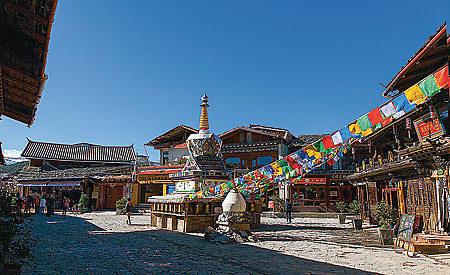
Named after a mythical site in the novel “Lost Horizon”, Shangri-La in China may be as close as it gets to the utopian place
by Frank Young After two hours of driving from Lijiang, our tour bus stops at a little dusty town en route to Shangri-La. A young man boards our bus. He is tall, strikingly handsome, and earthy-looking. His skin is tanned bronze from exposure to the sun’s intense rays at high altitudes. The young man sports a short and rugged black overcoat trimmed with white yak-fur lining and cuffs. He obviously isn’t a tourist and, despite his Asian features, he doesn’t look Chinese at all. This is rather mysterious, since we are deep in the middle of China. He introduces himself as Richard – the name he conveniently uses for foreigners who may have trouble remembering his ethnic name. He is Tibetan – the dominant ethnicity in this region of China – and he was our guide.
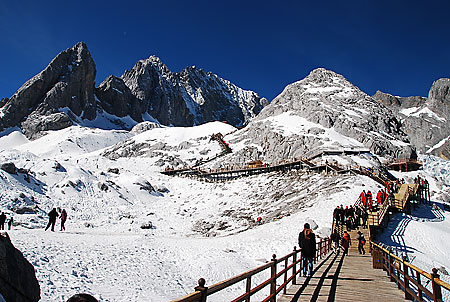
A Fabled Past
Ever since the novel “Lost Horizon” was published in 1933, Shangri-La has been a place that many people aspire to visit. The name, “Shangri-La”, is a siren call to all who seek inner peace, tranquillity and longevity. It’s no wonder that spas, hotels, restaurants and waterparks around the world use that name. This concept hasn’t escaped the attention of tourism officials in the region, either. Several places in the area claim to be the inspiration for the mythical utopia. One of these places is Zhongdian County in the Yunnan province of China. It was renamed “Shangri-La” in 2001 to help to attract tourists who visit nearby Lijiang and Dali to the area. It worked. Who wouldn’t want to visit paradise on earth, in only two extra days’ stay?
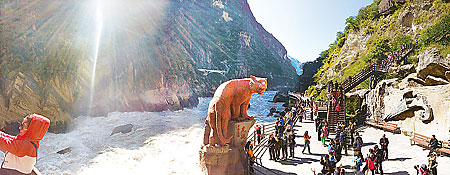
Cultural Paradigm Shift
On long journeys, in between destinations, good tour guides will take the opportunity to share the culture’s backstory, legends and myths. For over an hour, Richard introduced us to the mysteries of Tibetan culture to help to enrich our visit and there are at least two anecdotes worth telling. Given a choice between money and a yak, a Tibetan would choose the yak. (It’s not surprising that many Singaporeans were dumbfounded by this choice.) He went on to explain that there aren’t many shops to buy things in the first place, so money isn’t very useful. On the other hand, every single part of the yak is useful – hair for making coats, tents and ropes; milk for producing butter and cheeses; bones to be made into combs, ornaments and handicraft; and even dung for fuel. Moreover, the meat from one yak can feed a family for months! If you’re snowbound at home for four months during the winter season, I guess, the yak would be your best friend too. Culturally, Tibetans practice polyandry – marriage between a woman and several husbands, who are typically brothers to one another. When it comes to identifying the biological father of a child, the mother may not actually know. She can choose to stay silent for the sake of family harmony, leaving the eldest husband to carry the title of ‘father’ in the family. With these cultural perspectives and approaches toward topics such as money and spouses, it’s no wonder Tibetans are considered mysterious by many people. Still, there was more to experience and to realise.
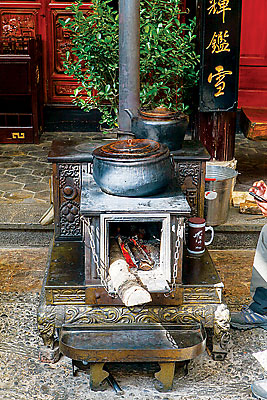
a heater and stove
One of the World’s Deepest Canyons
Several scenic stops punctuate the long bus ride to Shangri-La, which also provide Richard with some rest. A major stop we visited is one of the world’s deepest canyons. Flanked between Jade Dragon Snow Mountain and Haba Snow Mountain the roaring river has, for thousands of years, carved a gorge ever-deeper. Its legend tells of a tiger that leapt from one side of the canyon to the other to evade capture by hunters, hence its name – Tiger Leaping Gorge. The main attraction of Tiger Leaping Gorge is a steep 20-minute descent by stairs, to view the rapids from the riverbank. As we alight from the bus, local porters enthusiastically offer to carry us on shoulder-mounted red sedan chairs to the bottom of the stairs. They charge by weight: Thin people – RMB100 (about $20), fat people – RMB150 (about $30). As a seasoned traveller, I wasn’t suckered into such a tourist gimmick. Moreover, after spending over an hour on the bus, it seemed like a good idea at the time to walk. A series of safe, well-crafted stairs descend the side of Haba Mountain to the riverbank where you can see the rage of the river – churning, roaring, and battling the boulders breaching the riverbed. With a tiger’s agility and ability to leap long distances, one could easily believe how a tiger could have evaded capture by leaping over a series of boulders. Richard admits it’s very plausible but adds that he has never seen a tiger in this region in his entire life. Going down to the riverbank is easy enough. However, climbing back up on the sheer steps at 3,200m above sea level, where the air is thin, is a challenge for some. On the ascent, my legs and lungs were burning. Drawing breath was as if sucking bubble tea pearls through a very skinny straw. I cursed my decision to do it on my own. Where are those darn porters when you need them!
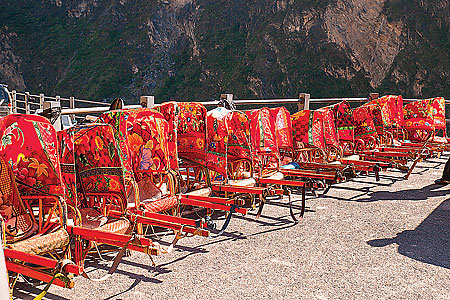
Tibetan Charm
Shangri-La County is sparsely populated. It’s more like farmland dotted with yaks and many recently- built Tibetan houses. These are two-storey rectangular abodes constructed with timber supports and clay walls. Draped upon numerous A-frame structures, hay is sun-dried as livestock feed in preparation for the long winter. On the second day, we visited Shangri-La’s Old Town – the main tourist attraction in the county. Overlooking the town square, on top of a hill, is an impressive lamasery. The lamasery’s collection of roofs cascade down the hill. A large glittering brass prayer wheel rises above the treeline, pointing towards the sky. As impressive and immense as it looks, I was told that there was a grander lamasery (Yunnan’s largest), Songzanlin Monastery, just a few kilometres away. In the town centre, one can take photos with yaks. When you’re able to, try the yak meat ‘satay’, which tastes like beef. You can also try the local barley cookies, or yak yoghurt. Shop houses line the charming cobblestone streets, selling trinkets and souvenirs. Don’t forget to haggle hard and start at 20 per cent of the offer price. Colourful Tibetan prayer flags draped along small lanes give them an artsy, bohemian, laid-back appearance. After a long stroll, we retreat into one of the shops and try the local power drink, Tibetan butter tea. It’s salty, lightly-buttery, and packed with calories to stave off the cold.
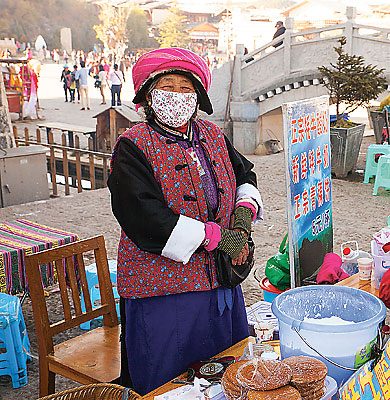
Clarity Atop Shika Mountain
At Shangri-La’s altitude of 3,200m, I started to feel the strain of laboured breathing from the thin air. The easy solution is simply to reduce physical exertion and to slow down. If one is feeling the effects of high altitude in Old Town, then it will be even more pronounced at the next attraction – Shika Mountain, 4,200m above sea level. A series of cable cars efficiently carries tourists to its permanent snow caps within minutes. At the top, there are elevated wooden trails for people to follow. For many who have never experienced snow, it is indeed a real treat to make snowmen and snow angels for the first time. Temperatures are well below zero at the top. Fortunately, thick, quilted overcoats and gloves are available for rent for unprepared tropical travellers. It’s all very well-managed and safe – assuming you don’t have altitude problems. Even if you do, cans of oxygen (RMB45) are readily available for people who may be affected by the thin air. I recommend checking for clear weather before you decide on the time to visit. If clouds roll in, visibility drops to just a few hundred metres. On a clear day, there are snow-capped mountains as far as the eye can see. It’s a clarity that truly evokes awe. Perhaps Shangri-La wasn’t the inspiration for “Lost Horizon”, but the mystique of Tibetan culture, its people and the majesty of its mountains is just as alluring. Although I have not found enlightenment in Shangri-La, I was enlightened by this intriguing journey.
ADVERTISEMENTS









Leave a Reply